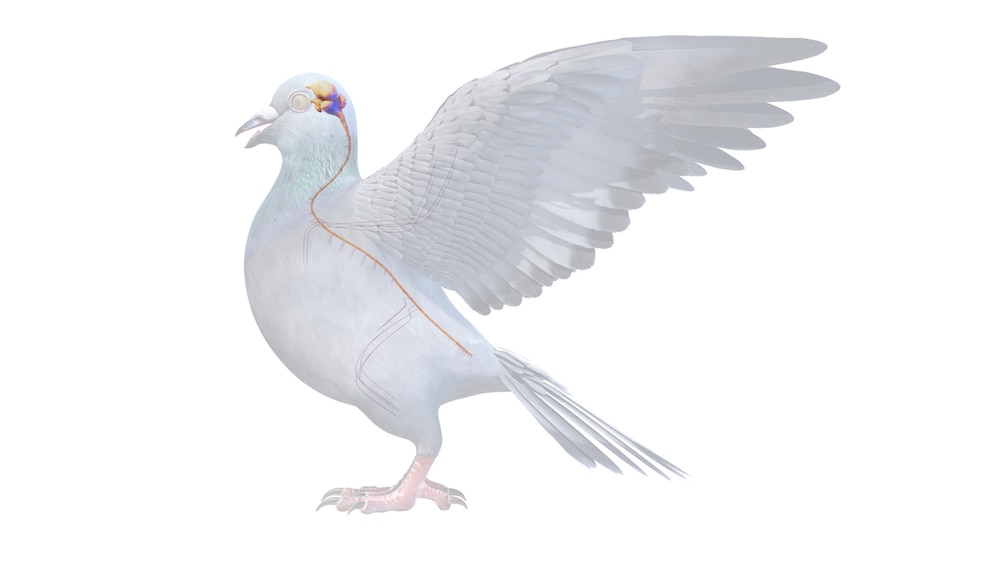Create a free profile to get unlimited access to exclusive videos, sweepstakes, and more!
Who you calling bird brain? Turns out avian minds are way more efficient than ours
What did you call me?

Chickens aren’t generally considered to be the smartest animals. The entire premise of Chicken Run hinges on the juxtaposition of their supposed lack of intelligence and their increasingly bird-brained schemes for escaping the coop. It’s unclear where the notion that chickens and other birds aren’t smart came from — our money is on a concerted propaganda war levied by Big Chicken — but the evidence increasingly shows it isn’t true.
Bird cognition has long been synonymous with a lack of intelligence. The term “bird brain” has been used as an insult since at least 1910, with the earlier version “bird-witted” dating back to at least the 1600s. The origin of the term as an insult is unclear, but we recognize it as a pejorative which leans on the relatively small brains of birds. It turns out, however, that we might have to retire this particular rejoinder.
Many birds, corvids and parrots in particular, are capable of high levels of cognition which stand toe to toe with some primates. Some birds are capable of learning and remembering faces. They can discriminate between different colors, shapes, and some words. Some birds are even capable of solving complex puzzles. Now, new research carried out by scientists at Ruhr University, along with colleagues at the University Hospital of Cologne and the Max Planck Institute for Metabolism Research, has revealed the bird brains are special in more ways than we knew. Their findings were published in the journal Current Biology.
As previously mentioned, research over the last several decades has revealed that birds are smarter than we once gave them credit for — some even use their smarts to cheat on their partners, but who are we to judge? That was particularly surprising because they exhibit complex cognition while having brains which are smaller than similarly adept mammals. A study published in 2016 went some of the way toward solving this mystery when they discovered that some birds have twice as many neurons as primate brains of similar mass. While that answered some questions, it opened up some new ones which the team at Ruhr University set out to address.
Neurons aren’t energetically cheap. The human brain uses about 20% of the body’s total energy budget despite making up only about 2% of the mass. Given their high energy costs and the high density of neurons in the bird brain, researchers wondered how they manage to pack such an impressive cognitive punch without running out of fuel.
To find out, scientists imaged the brains of pigeons and created models to calculate how much glucose they consumed. Surprisingly, they found that the neurons in a bird’s brain use about a third of the energy as their mammalian companions, pound for pound. It’s as if birds stumbled into the brain store when they were having a particularly good sale and birds decided to take advantage of the cost savings and buy neurons in bulk.
Part of the energy savings could come from the difference in relative size of their neurons, but scientists noted it wasn’t enough to explain the complete cost disparity. Other contributing factors could include the specific layout of the brain and a bird’s relatively high body temperature. Pigeon body temperature sits at about 105 Fahrenheit or 40 Celsius, when resting. That higher temperature, as compared to mammals, could help in energy efficiency of the brain.
These findings could change our understanding of how brain size and intelligence evolve. We had previously thought that the energy budget of neurons was more or less static. As such, it places a sort of upper limit on the number of neurons an organism can support. Each additional neuron carries a cost which must be paid by the organism on the whole. Any increase in neurons can only be supported if it results in enough added intelligence to support the higher energy cost. Otherwise, the animal will starve. An animal could quite literally be too smart to live.
The composition of bird brains offers an alternative. It shows that energy costs aren’t necessarily static, and you can pack in more neurons not by making the brain larger but by making them more efficient. If our brains were as efficient as a bird, we’d be able to pack in twice the number of neurons at a fraction of the cost. Turns out, “bird brain” might actually be a compliment.


























